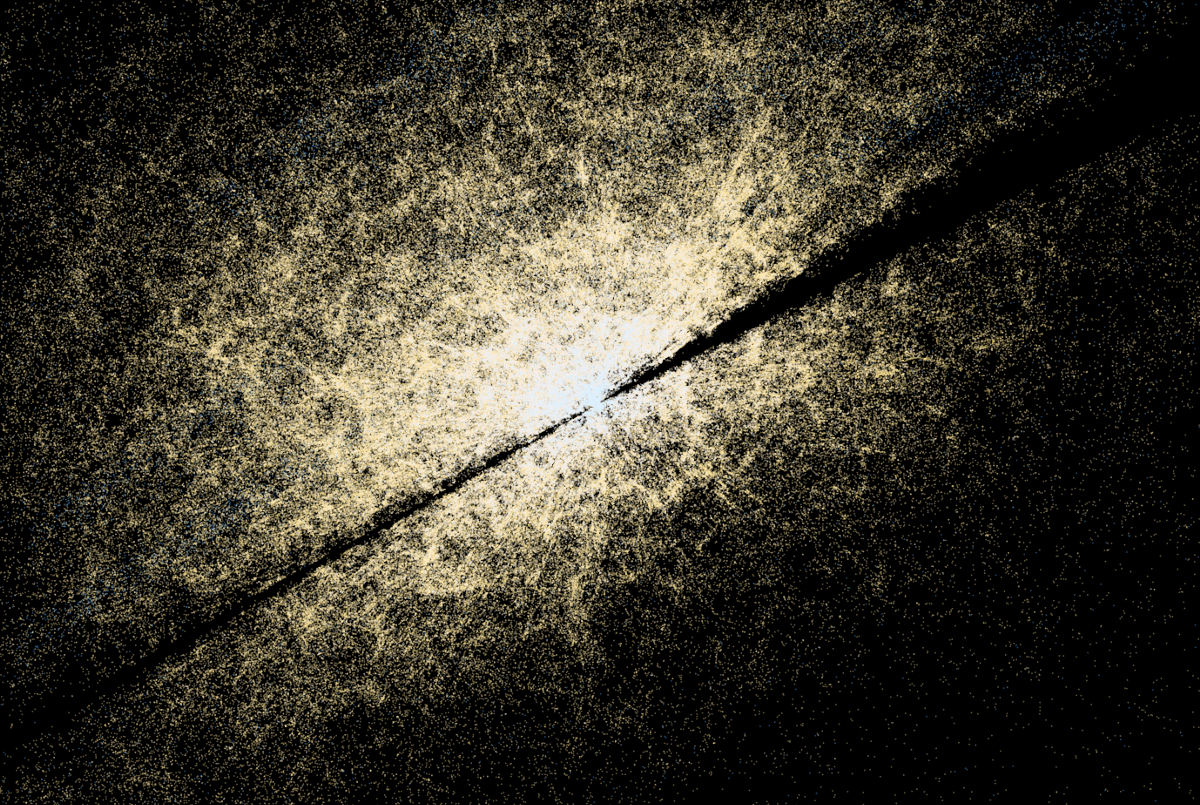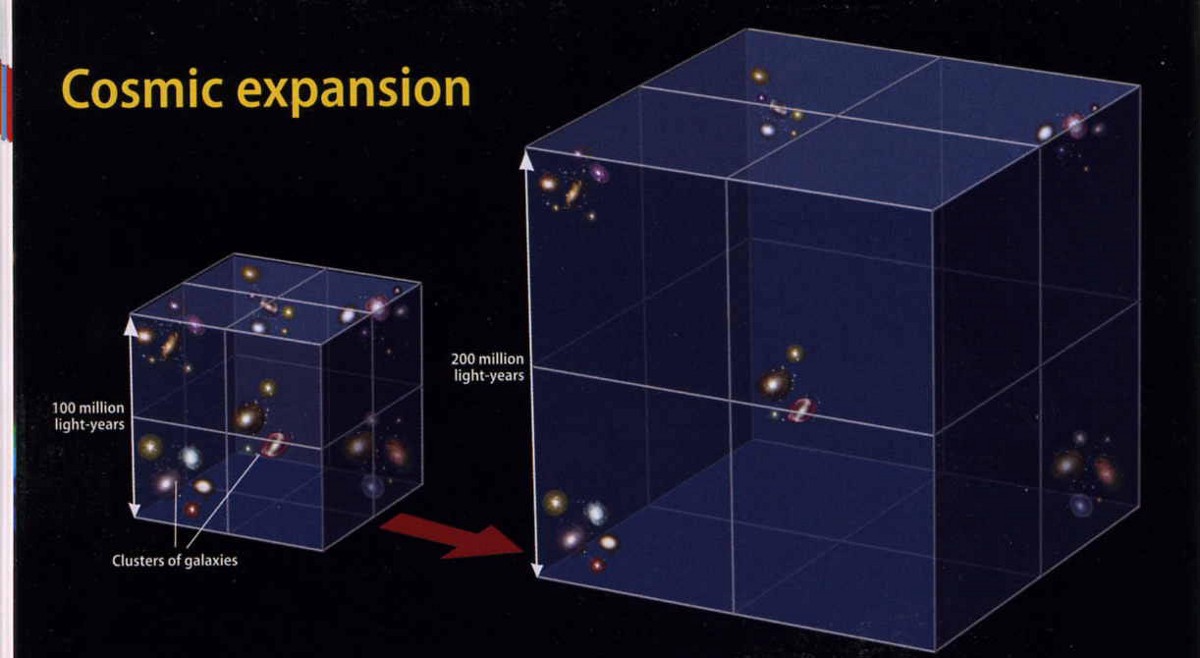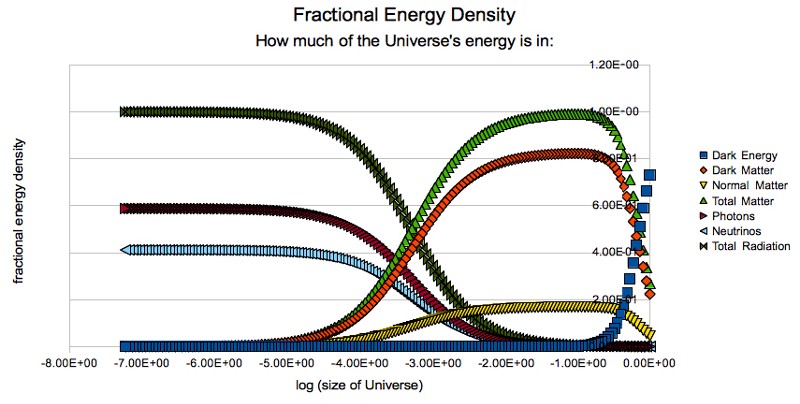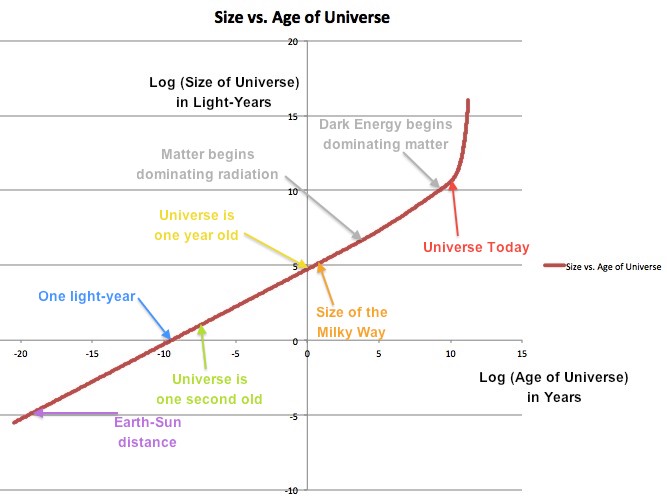How is it that the size of the universe is more than its age?
- Transfer
We know that the age of the Universe is 13.8 billion years, but the size of the observable Universe is 46 billion light years. How is this possible?
Nature requires that we not exceed the speed of light. Everything else is optional.
- Robert Brolt
One of the most amazing discoveries of the 20th century was due to the study of huge spiral nebulae scattered across the night sky.

It quickly became clear that these objects are galaxies similar to our Milky Way, located thousands of light years away. In addition, most of them are moving away from us. What is even more interesting is that the farther the galaxy is from us, the (on average) it moves away faster. In just a few years, both the mechanism and the law governing this phenomenon were discovered.

There were no difficulties with the law: you measure the speed of the galaxy, based on the spectral shift and estimate the distance to it using various methods, including standard candles. As a result, although you still have errors, you will receive data on the removal of galaxies and on the speed of their escape. The relationship between these two parameters is known as the Hubble law and it defines how distant galaxies move relative to us.
The mechanism of the occurring phenomenon was more interesting.

There is a strong temptation to assume that the cause of the observed phenomenon - more distant objects are removed faster - is in some kind of explosion that happened in the past. If this were the case, then the galaxies that received less “initial explosion energy” would be closer to each other and would fly apart from each other more slowly, and the galaxies distant from us would receive more energy to fly away at such a high speed.
If this were so, then we would be very close to the center of the explosion, and the density of galaxies near us would be much higher than far from us. In this case, the space would be static - like a fixed three-dimensional lattice. But this is not the only possibility.

It is also possible that instead of a static universe starting from an explosion, it could obey a more powerful decision of GR: it can expand! Instead of starting due to a catastrophic explosion in a static Universe, the fabric of the cosmos can expand with time, in proportion to the amount of energy contained in it.
In this case, the number of galaxies should be on average the same in equal volumes of space, the expansion rate should increase according to a predictable dependence on distance, the Universe should have been hotter in the past and a cluster of galaxies should form a web-like structure in which all regions of space look approximately the same on a large scale.

In the case of the first option, with an explosion and a static space, and in the case of a finite age of the Universe, we could look into the distance at a distance determined by this age. In a static Universe, at the age of 5 years, we could see the light coming from objects located no further than 5 light years from us. In a static universe with an age of 13.8 billion years, we could see light coming from objects located no further than 13.8 billion light years from us.
But all our observations refute this possibility and direct us to the idea of expanding space, in which the content of energy in the Universe determines the rate of expansion and, therefore, how far objects are located from us.

What is less intuitive is that in an expanding universe we can see further than its simple age determines it! This is just a must. Think of the diagram above, in which several clusters of galaxies move away from each other due to the expansion of the Universe. Imagine that we are in a central cluster and we see a cluster in the lower left corner.
When the light leaves the cluster in the lower left corner (left), this cluster is 87 light years away. Light begins its journey towards us, but the Universe is expanding. That is, the space between this cluster and ours increases, like a baked piece of dough, future bread. The light continues to go towards us, but with increasing distance it has to go more than 87 light years to reach us. But when the light reaches its destination (right), this cluster is already 173 light years away.
The key question is: what distance did the light actually cover? The answer is more than 87 light years, but less than 173 light years!

Apply this principle to the whole universe.
13.8 billion years ago, the universe was unrealistically hot and dense and was filled with a huge variety of energy sources: radiation (photons), matter (protons, neutrons, electrons) and the inherent energy of space (dark energy). If the expanding Universe was filled with only one of these three types of energy, and you asked the question how far is the object from which the light has just reached us, you would get three different answers. Why?

Because the energy density at any moment in history determines the history of the expansion of the Universe, and radiation, matter and the inherent energy of space evolve differently! And here is the final result for a universe of 13.8 billion years old:
If the Universe was filled only with radiation, an object whose light would only now reach us after traveling for 13.8 billion years would be at a distance of 27.6 billion light years from us.
If the Universe were filled only with matter, the object, whose light only now would reach us after a journey of 13.8 billion years, would be at a distance of 41.4 billion light years from us.
If the Universe were filled with only dark energy, no light would reach us at all, since the expansion would be exponential and after such a time we would simply not see anything.
But none of these examples correspond to the real Universe in which these energies are mixed and this mixture changes with time.

In the early stages of the universe, radiation dominated in the first few thousand years, mainly in the form of photons and neutrinos. Then there was a phase transition and matter (normal and dark) became the predominant component for billions of years. And most recently, after the formation of the solar system and the Earth, dark energy became dominant. Since dark energy was not (and will not be) the only source of energy of the Universe, we will never find ourselves in a situation in which light will not reach us. But it is enough to push the boundaries of the universe further than in the version with matter alone: up to 46.1 billion light years.
This is counterintuitive, but it must be remembered: 13.8 billion years ago, the entire observable Universe was smaller than our present-day Solar System!

The expansion of the universe began very quickly and slowed down over time. It continues to slow down, but it asymptotically tends not to zero, but to a finite, albeit large, value. This means that the light from a very distant object, carried away by the expansion of the Universe more than 40 billion light years from us, can reach us today, having made a journey through the Universe comparable to the entire history of its existence.
And when it comes to us, we will see the light emitted at the time when the Universe was extremely young.
The only difference is in the spectral redshift, which allows us to determine the age and distance of this object.
That is why in the universe with an age of 13.8 billion years, the most distant visible objects are 46 billion light-years away from us!
